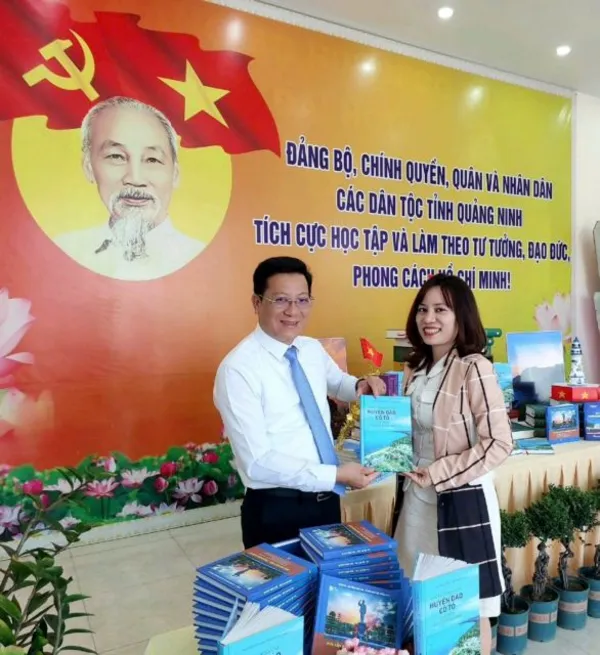 Life & Style
Life & Style

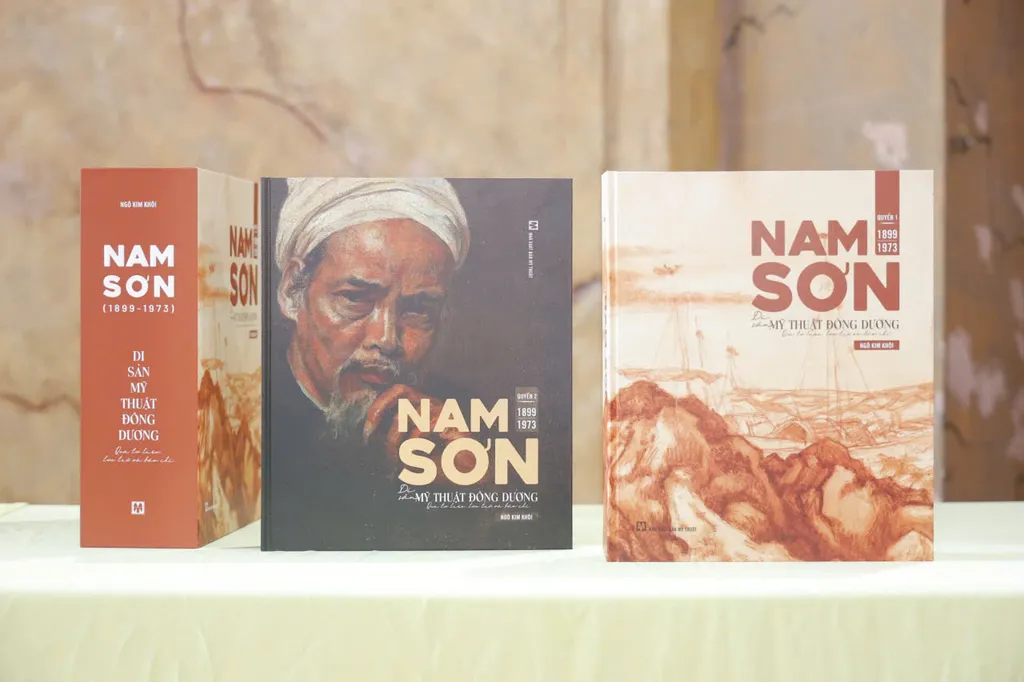 |
| 'Nam Sơn – The Heritage of Indochinese Fine Arts from Historical Documents, Archives, and Press' is the fruit of 25 years of research by art historian Ngô Kim Khôi. Photo courtesy of the author |
HÀ NỘI A trilingual book celebrating the life and work of Nguyễn Nam Sơn (1899–1973), one of Việt Nam’s pioneering modern artists, has been published to mark the 100th anniversary of the founding of L' Ecole Superieure des Beaux-Arts de l'Indochine (the Indochina School of Fine Arts).
Far more than a biography, Nam Sơn – The Heritage of Indochinese Fine Arts from Historical Documents, Archives and Press is a scholarly journey that revives historical memory, highlights Việt Nam’s artistic heritage and affirms the unique identity of an art shaped by the dialogue between East and West in the 20th century.
The monumental work is the result of 25 years of painstaking research by art historian Ngô Kim Khôi, the painter’s grandson. It brings together more than 70 rare artworks and 600 archival images from museums, private collections and family archives in Việt Nam and abroad.
Through detailed documentation, the book sheds light on Nam Sơn’s role as a founder of modern Vietnamese art and his influence on generations of artists. It presents a vivid portrait of a creative life that bridged cultural traditions while embracing innovation.
By drawing on historical records, press reports and family archives, the publication captures not only the painter’s artistic achievements but also the broader cultural context in which he worked, offering readers an immersive view of Việt Nam’s early 20th-century art scene.
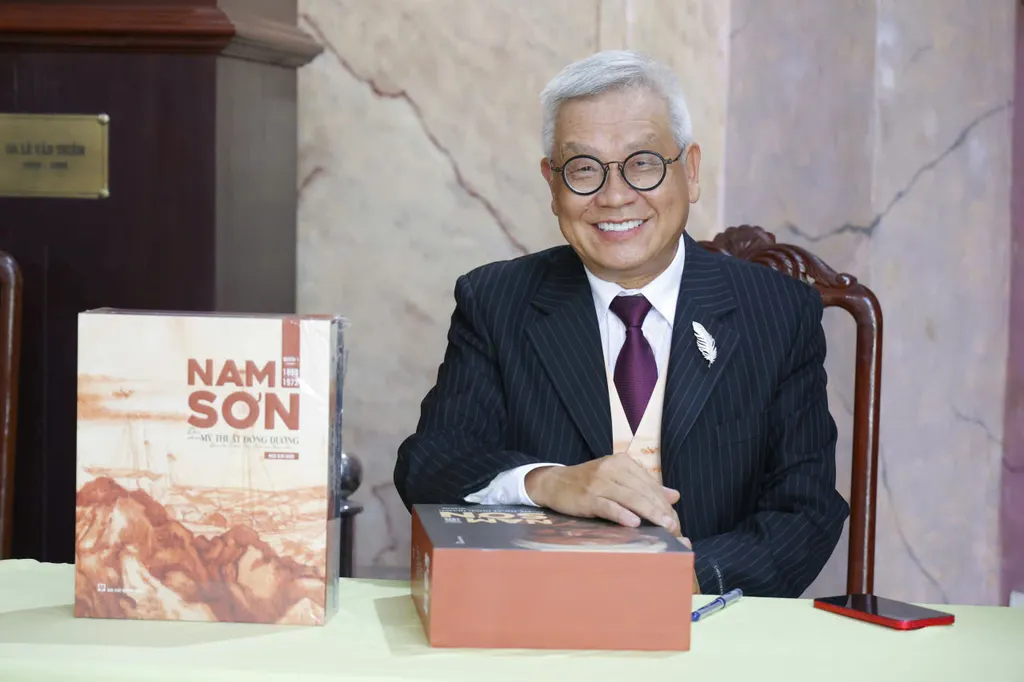 |
| Art researcher Ngô Kim Khôi. Photo courtesy of the author |
Reviving a forgotten legacy
“Through the testimony of my mother, Mme Nguyễn Thị Ngọc Trâm, and family archives, as well as documents painstakingly collected in Việt Nam and France, I have excavated the past, revived memories and brought to light a destiny once obscured by the shadows of history,” Khôi said.
The book comprises two volumes and is presented in Vietnamese, French and English. It was published by the Fine Arts Publishing House.
The Millon auction house, a pioneer in promoting Vietnamese art on the international stage, holds exclusive distribution rights for the book in France.
“I began this project in 1999, and though many years have passed, I know this is just the beginning. There will certainly be gaps, but I will continue to supplement and refine it,” Khôi wrote in the introduction to the book.
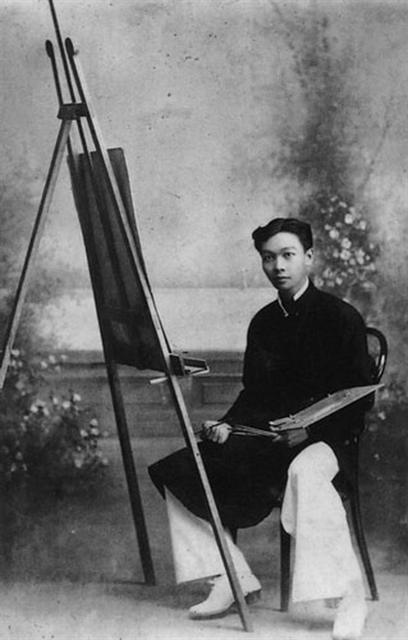 |
| Painter Nguyễn Nam Sơn, pictured in 1919. File Photo |
According to art critic Quang Việt, this work stands as one of the most comprehensive scholarly undertakings on the first 20 ‘modern’ years of Vietnamese art.
“Every figure, every photograph carries its own rhythm – like a lyrical composition rich in poetry,” he said.
Researcher Lê Xuân Phán said: "This book resembles a miniature museum – each page unfolds like a curated exhibition, telling a story of creativity, dedication and heartfelt love for the homeland."
Together with the book launch comes a special exhibition showcasing nine original works by Nam Sơn, a unique opportunity to explore an artistic legacy intertwined with milestones in Việt Nam’s art history. These works will be displayed at the Quang San Art Museum in HCM City from October 24 to November 2.
A bridge between East and West
In the vibrant flow of Vietnamese history, amidst the confluence and upheavals of Eastern and Western civilisations, pioneering figures like Victor Tardieu (1870–1937) and Nam Sơn emerged as architects of modern Vietnamese art.
In 1925, when Tardieu received authorisation to establish L'Ecole Superieure des Beaux-Arts de l'Indochine, he made a bold choice – to partner with Nam Sơn, his exceptional student trained at L'École des Beaux-Arts de Paris, rather than a Western artist.
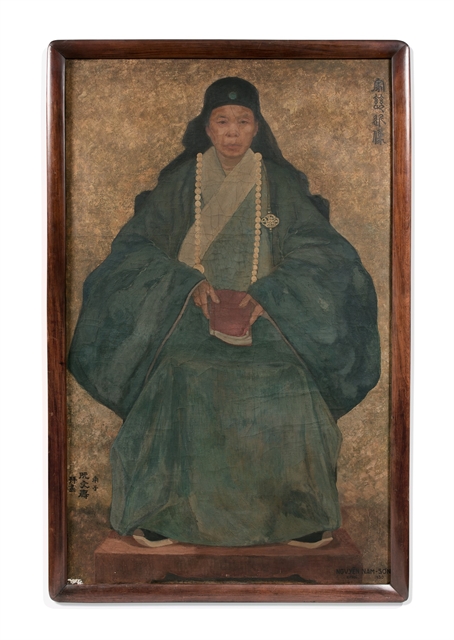 |
| Painting entitled 'Chân Dung Mẹ Tôi' (My Mother's Portrait) by Nam Sơn. |
As the first Vietnamese professor and director of the institution, Nam Sơn blended Western techniques – oil painting, academic drawing – with traditional Vietnamese mediums like lacquer and silk, forging a distinctive artistic identity. He mentored generations of renowned artists, such as Lê Phổ (1907–2001), Mai Trung Thứ (1906–1980), and Vũ Cao Đàm (1908–2000), who elevated Vietnamese art to the global stage.
"Nam Sơn was not merely a pioneering artist; he was a visionary educator, one who ignited a spirit of intellectual emancipation and awakened a profound sense of national identity through art,” said researcher Nguyễn Thụy Phương.
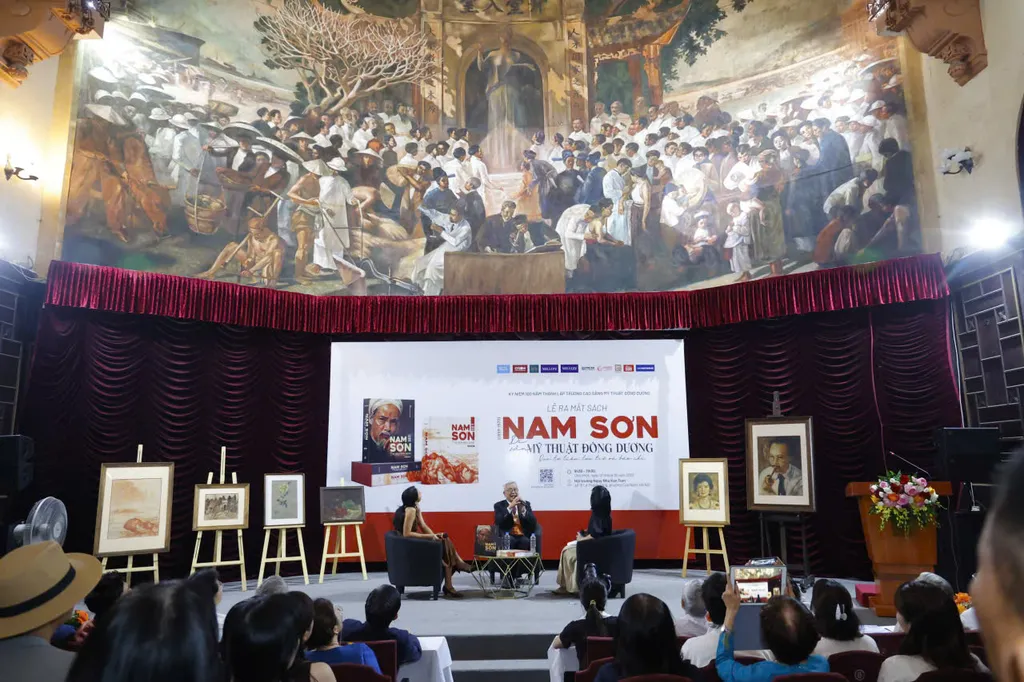 |
| Art research Ngô Kim Khôi (centre) at the book launch held in Ngụy Như Kon Tum Hall in Hà Nội. The hall is decorated with a mural by French painter Victor Tardieu. Photo courtesy of the author |
Ngô Kim Khôi, Nam Sơn’s grandson, born in 1959, is the son of Mme Nguyễn Thị Ngọc Trâm, the artist’s third daughter.
Self-taught in painting, music, and singing, Khôi has dedicated over 30 years to researching Vietnamese art history.
He has collaborated with the Mairie de Paris (1998), the Cernuschi Museum (2012–2013), the Académie des Sciences d’Outre-Mer (2015) and leading auction houses (Millon, Millon-Vietnam, Aguttes, Art Valorem, Lynda Trouvé, Asium, Bonhams, Art Research Paris), as well as numerous media outlets in Việt Nam and abroad.
Author of Thang Trần Phềnh (2018), he served as artistic director for the exhibition Lê Văn Xương, a Miracle in HCM City in 2018 and curator of the multidisciplinary exhibition Circle of Life and Death by artist Phạm Trần Việt Nam at the Lê Bá Đảng Memorial Space in Huế City in 2025, alongside other solo exhibitions between 2020 and 2025. VNS



